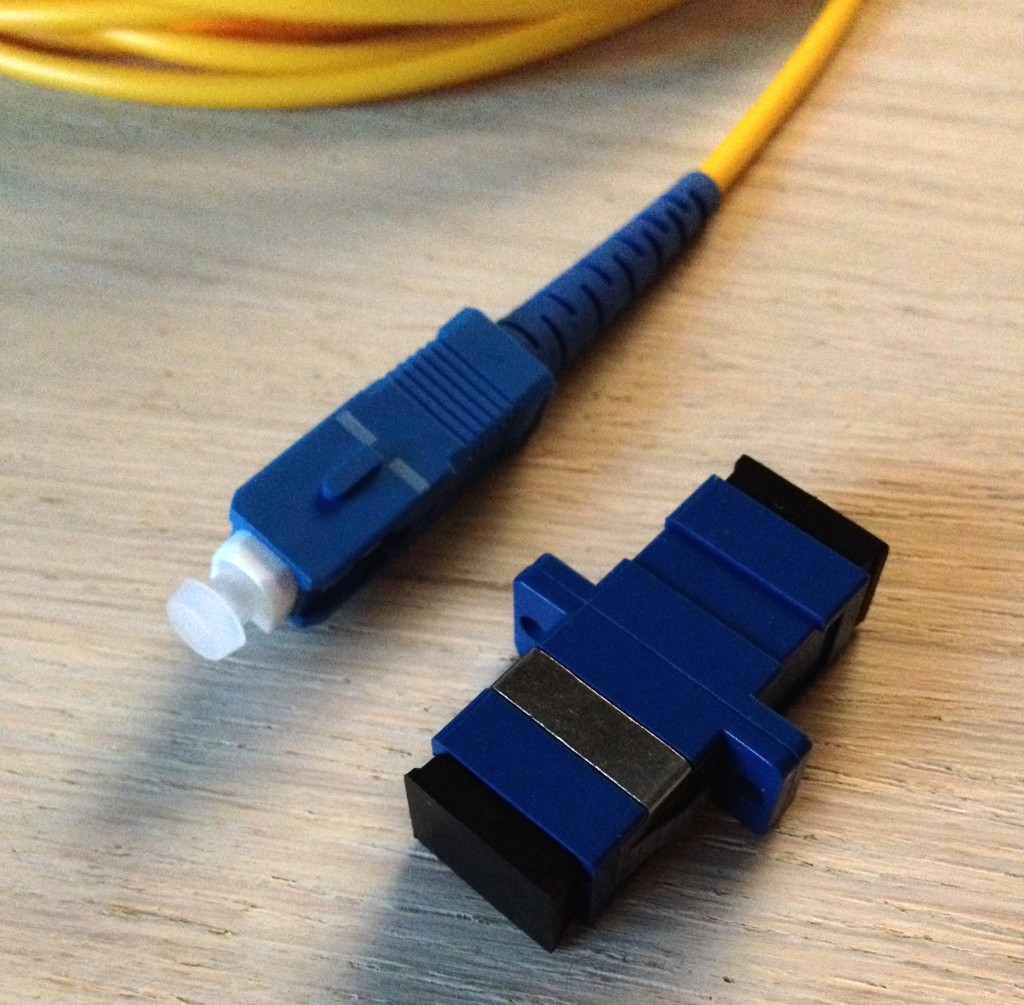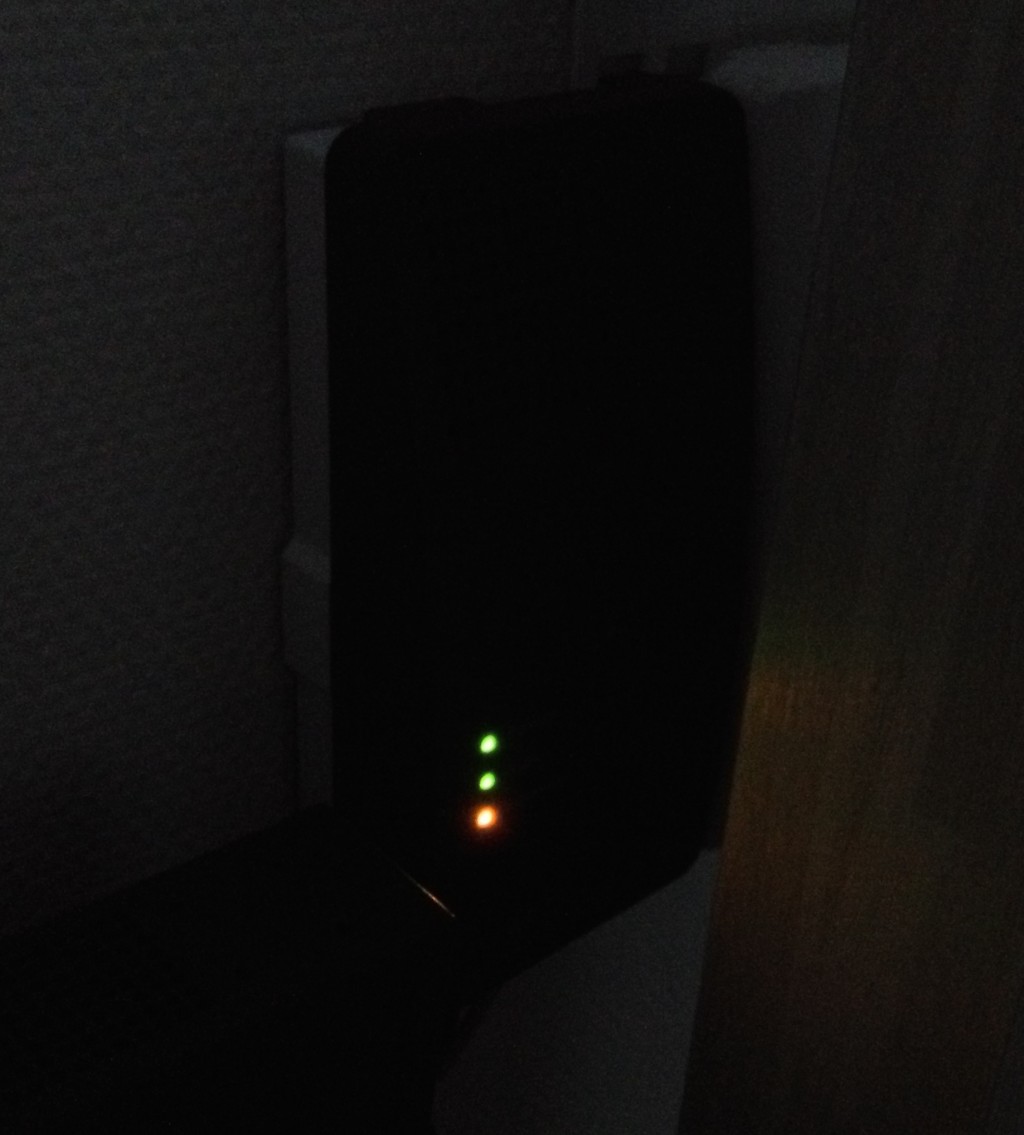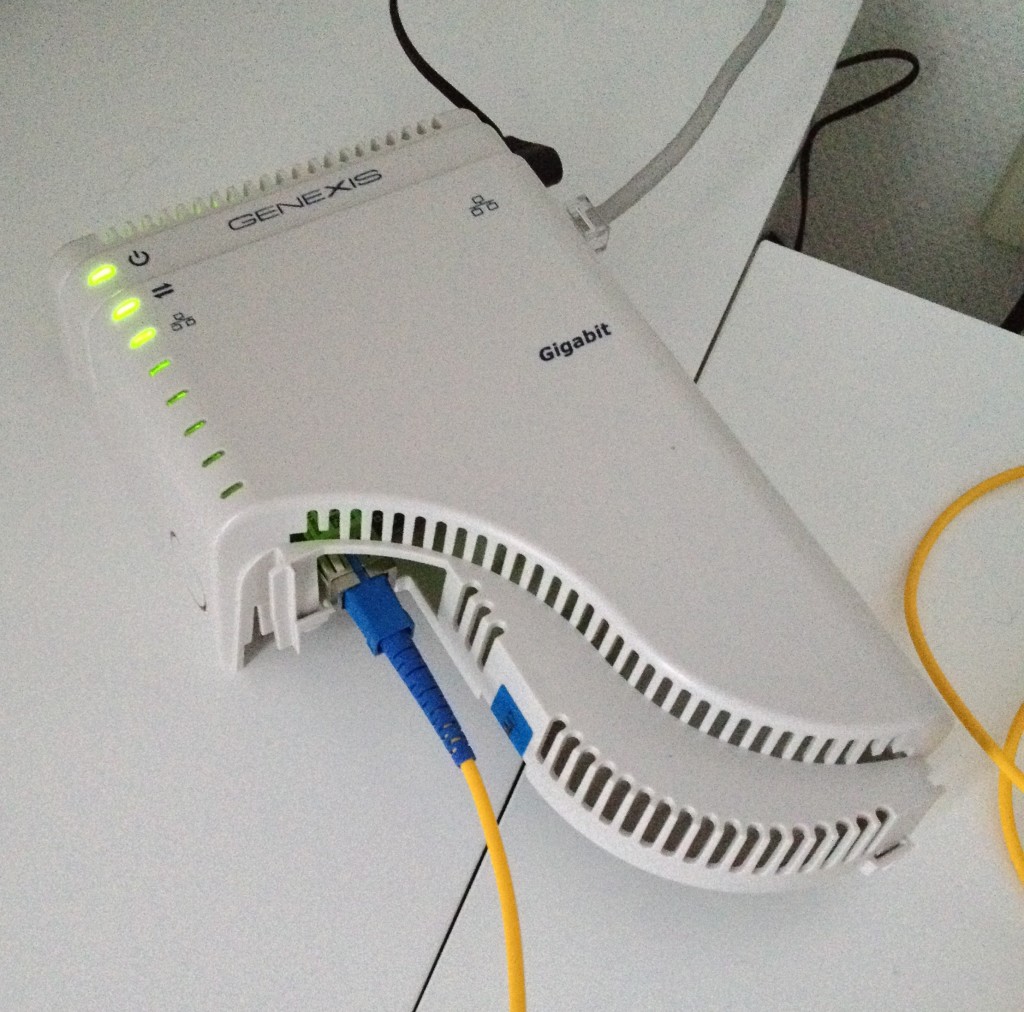What’s this about
When I ordered 100Mbps fiber internet (FttH) last year my provider Xs4all sent me the Genexis FiberXport. The idea was that the network operator Reggefiber would install the Genexis FXP-100 fiber termination unit (FTU) and I could snap the FiberXport ISP modem onto that. After a lot of trouble with the fiber installation finally the wallplate was installed and connected. However, it turned out they installed one completely different: a (former) Tyco uFTU. This one is not compatible with the FiberXport and takes a lot more space because it has two fiber ports, even though the second port is not used yet. That other port is intended for future applications should there ever be a need. Some time later Reggefiber also installed their own (KPN) modem, the PacketFront Genexis MC901 and I have been using that one ever since. I have always wondered if there is a difference in performance between the MC901 and the FiberXport fiber modems as they both are gigabit compliant.
So recently I ordered a fiber cable and f/f adapter on eBay to put both of these fiber modems to the test.


The setup
My network wires after the modem are cheap homemade cat5e cable, the router is a Fritz!box 7390 (gigabit), and there’s a HP Procurve 1810-24G (gigabit) switch. I ran the tests on a 2012 Macbook Pro. So everything from uplink to laptop is in theory gigabit capable. The best transferrate in my lan was way over 800 Mbit/s.
Finally the Tyco uFTU and the fiber modem are connected by a singlemode SC-SC fiber and a SC-SC/PC adapter. The interface on the uFTU is a connector instead of a bus, hence the adapter.


Testing the fiber modems
This is the boring part with boring results. Just a bunch of numbers with averages.. I ran each test 5 times to make sure the average is stable. In the case of ping that is 5 x 10 pings. For bandwidth I used Speedtest.net, their own Ookla server in Amsterdam is the best performing target server for me. The ping ran against my own Ubuntu server at DirectVPS. At first I attempted iPerf between home and my server, but I guess the peering bandwidth to Xs4all is not optimal. Ping is alright though.
| MC901 | FiberXport | |
| Download | 93.272 Mb | 93.316 Mb |
| Upload | 93.854 Mb | 94.018 Mb |
| Ping | 5.5224 ms | 5.516 ms |
Conclusion (TL;DR)
The Genexis FiberXport is a fraction better on both the bandwidth and latency tests, but the difference between both fiber modems is way to small to completely switch to the Genexis and deal with extra wires all the time. For now I’ll stick with the MC901. :)

Hello,
Cool data thanks for posting.
I am awaiting the Reggefiber FTU on the 13th May 8-12h
and the Xs4all tech shows up on the 13th from 13-18h.
I have bought a google Onhub router and I am hoping to connect it directly to the
NTU and avoid the fritzbox which makes my tummy ache. What do you think, can I
connect the Onhub router directly to the NTU? Thanks for any feedback.
Cheers,
Timothy
Hi Timothy,
That’s great!
It depends on whether the OnHub supports VLAN tagging. For internet you need to set VID 4 and for IPTV set VID 6. As far as I can tell this is not yet the case with the OnHub, so you have to use a modem like the Fritzbox to take care of the VLAN part and connect the OnHub to the Fritz.
Then just disable all the redundant features on the Fritz, like wifi and prioritization so they don’t interfere with the OnHub.